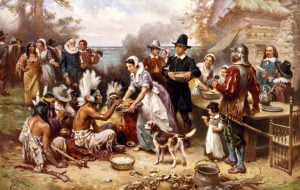President Lincoln’s call to arms – and the start of the Civil War
The president called for 75,000 militia to serve for 90 days, and also set July 4 as the date of a special meeting of Congress. Northerners received the proclamation with enthusiasm.
To most Southerners, however, it was seen as an act of coercion, and induced the four remaining slave states — Virginia, Arkansas, Tennessee, and North Carolina — to secede. (Adapted from the Library of Congress)

BY THE PRESIDENT OF THE UNITED STATES OF AMERICA
A PROCLAMATION
Whereas the laws of the United States have been for some time past and now are opposed and the execution thereof obstructed in the States of South Carolina, Georgia, Alabama, Florida, Mississippi, Louisiana, and Texas by combinations too powerful to be suppressed by the ordinary course of judicial proceedings or by the powers vested in the marshals by law:
Now, therefore, I, Abraham Lincoln, President of the United States, in virtue of the power in me vested by the Constitution and the laws, have thought fit to call forth, and hereby do call forth, the militia of the several States of the Union to the aggregate number of 75,000 in order to suppress said combinations and to cause the laws to be duly executed.
The details for this object will be immediately communicated to the State authorities through the War Department.
I appeal to all loyal citizens to favor, facilitate, and aid this effort to maintain the honor, the integrity, and the existence of our National Union and the perpetuity of popular government and to redress wrongs already long enough endured.
ALSO SEE: America’s history of slavery: See some of the terrible old ads actually offering people for sale
I deem it proper to say that the first service assigned to the forces hereby called forth will probably be to repossess the forts, places, and property which have been seized from the Union; and in every event the utmost care will be observed, consistently with the objects aforesaid, to avoid any devastation, any destruction of or interference with property, or any disturbance of peaceful citizens in any part of the country.
And I hereby command the persons composing the combinations aforesaid to disperse and retire peaceably to their respective abodes within twenty days from this date.
Deeming that the present condition of public affairs presents an extraordinary occasion, I do hereby, in virtue of the power in me vested by the Constitution, convene both Houses of Congress. Senators and Representatives are therefore summoned to assemble at their respective chambers at 12 o’clock noon on Thursday, the 4th day of July next, then and there to consider and determine such measures as, in their wisdom, the public safety and interest may seem to demand.
In witness whereof I have hereunto set my hand and caused the seal of the United States to be affixed.
Done at the city of Washington, this 15th day of April, A.D. 1861, and of the Independence of the United States the eighty-fifth.
ABRAHAM LINCOLN.
By the President: WILLIAM H. SEWARD, Secretary of State.
DON’T MISS: Details of the Civil War’s key Battle of the Wilderness (1864)
Lincoln’s original handwritten documents: A proclamation (1861)


ALSO SEE THIS: How the Civil War ended, and find out the details of Lee’s surrender to Grant (1865)



















